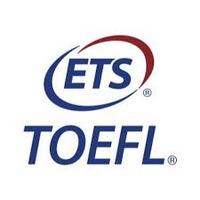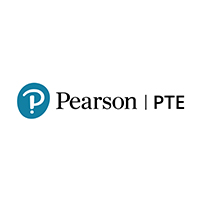VMC VIQ Scholarship Test
Register for Vidyamandir Intellect Quest. Get Scholarship and Cash Rewards.
UK board 12th exams are conducted annually by the Uttarakhand Board of School Education (UBSE) in Ramnagar, Nainital. Approximately 2,50,000 students appear for the Uttarakhand Board 12th exams every year. Students who have cleared Class 11 and fulfilled all other eligibility requirements for UK Board 12th exams 2025 can apply for the same.
More About UK 12th Board Exams 2025:
Also, Read: Short term job oriented courses after 12th
| Full Exam Name | Uttarakhand Board 12th Examination |
| Short Exam Name | UK Board 12th |
| Conducting Body | Uttarakhand Board Of School Education |
| Frequency Of Conduct | Once a year |
| Exam Level | Intermediate |
| Languages | English +1 more |
| Mode Of Application | offline |
| Mode Of Exam | offline |
| Exam Duration | 3 Hours |
UK Board 12th Uttarakhand Board 12th Examination (session 2025)
Students appearing in the UK board 12th exams 2025 must fulfil the eligibility criteria of the Uttarakhand Class 12th board examination as specified by UBSE. As per the UK board, 12th eligibility criteria 2025, only those students who meet the following eligibility criteria will be able to appear for class 12th board exam of the Uttarakhand board.
Students who want to appear for UK board 12th exams 2025 will be required to apply for the UK 12th exams with UBSE.
Also, read: Courses after 12th
Candidates who are seeking admission to B.Tech colleges in Punjab can find the list of 50 topmost colleges in the state, along with their ranking, available courses, fees and exams.
Download EBookThe UK board 12th exam pattern 2025 help students streamline their preparations and help them in their study routine for the class 12th board exam.
Also, read: Courses after 12th PCM


English: Unit 02
History-Archaeology and ancient India: Unit 02
Geography-fundamentals of human geography: Unit 02
Geography-fundamentals of human geography: Unit 03
Geography-fundamentals of human geography: Unit 04
Geography-India:People and economy: Unit 01
Geography-India:People and economy: Unit 02
Geography-India:People and economy: Unit 03
Geography-India:People and economy: Unit 04
Economics-introductory microeconomics: Unit 01
Economics-introductory microeconomics: Unit 02
Economics-introductory microeconomics: Unit 03
Economics-introductory microeconomics: Unit 04
Economics-introductory macroeconomics: Unit 01
Economics-introductory macroeconomics: Unit 02
Economics-introductory macroeconomics: Unit 03
Economics-introductory macroeconomics: Unit 04
Economics-introductory macroeconomics: Unit 05
Home science: Unit 01
Home science: Unit 02
Home science: Unit 03
Home science: Unit 04
Home science: Unit 05
Political science-Contemporary world politics: Unit 01
Political science-Contemporary world politics: Unit 02
Political science-Contemporary world politics: Unit 03
Political science-Contemporary world politics: Unit 04
Political science-Contemporary world politics: Unit 05
Political science-Contemporary world politics: Unit 06
Political science-Contemporary world politics: Unit 07
Political science-Politics of India since independence: Unit 01
Political science-Politics of India since independence: Unit 02
Political science-Politics of India since independence: Unit 03
Political science-Politics of India since independence: Unit 04
Political science-Politics of India since independence: Unit 05
Political science-Politics of India since independence: Unit 06
Psychology-Psychology, self, and society: Unit 01
Psychology-Psychology, self, and society: Unit 02
Psychology-Psychology, self, and society: Unit 03
Psychology-Psychology, self, and society: Unit 04
Psychology-Psychology, self, and society: Unit 05
Psychology-Psychology, self, and society: Unit 06
Psychology-Psychology, self, and society: Unit 07
Sociology-Indian society: Unit 01
Sociology-Indian society: Unit 02
Sociology-Indian society: Unit 03
Sociology-Indian society: Unit 04
Sociology-change and development in India: Unit 01
Sociology-change and development in India: Unit 02
Sociology-change and development in India: Unit 03
Sociology-change and development in India: Unit 04
Sociology-change and development in India: Unit 05
Mathematics: Unit 01
Mathematics: Unit 02
Mathematics: Unit 03
Mathematics: Unit 04
Mathematics: Unit 05
Mathematics: Unit 06
Physics: Unit 01
Physics: Unit 02
Physics: Unit 03
Physics: Unit 04
Physics: Unit 05
Physics: Unit 06
Physics: Unit 07
Physics: Unit 08
Physics: Unit 09
Chemistry: Unit 01
Chemistry: Unit 02
Chemistry: Unit 03
Chemistry: Unit 04
Chemistry: Unit 05
Chemistry: Unit 06
Chemistry: Unit 07
Chemistry: Unit 08
Chemistry: Unit 09
Chemistry: Unit 10
Chemistry: Unit 11
Chemistry: Unit 12
Chemistry: Unit 13
Biology: Unit 01
Biology: Unit 02
Biology: Unit 03
Biology: Unit 04
Biology: Unit 05
Accountancy-Accounting for not-for-profit organisations, partnership firms, and companies: Unit 01
Accountancy-Accounting for not-for-profit organisations, partnership firms, and companies: Unit 02
Accountancy-Accounting for not-for-profit organisations, partnership firms, and companies: Unit 03
Accountancy-Accounting for not-for-profit organisations, partnership firms, and companies: Unit 04
Accountancy-financial statement analysis: Unit 01
Accountancy-financial statement analysis: Unit 02
Accountancy-Computerised accounting: Unit 01
Accountancy-Computerised accounting: Unit 02
Accountancy-Computerised accounting: Unit 03
Business studies-principles and functions of management: Unit 01
Business studies-principles and functions of management: Unit 02
Business studies-principles and functions of management: Unit 03
Business studies-principles and functions of management: Unit 04
Business studies-principles and functions of management: Unit 05
Business studies-principles and functions of management: Unit 06
Business studies-principles and functions of management: Unit 07
Business studies-principles and functions of management: Unit 08
Business studies-business finance and marketing: Unit 01
Business studies-business finance and marketing: Unit 02
Business studies-business finance and marketing: Unit 03
Business studies-business finance and marketing: Unit 04
Computer science: Unit 01
Computer science: Unit 02
Computer science: Unit 03
Computer science: Unit 04
Computer science: Unit 05
Urdu: Unit 02
Punjabi: Unit 02
Punjabi: Unit 03
Hindustani music (vocal): Unit 01
Hindustani music (vocal): Unit 04
Hindustani music (instrumental melodic): Unit 01
Hindustani music (instrumental melodic): Unit 04
Hindustani music (instrumental melodic): Unit 05
Hindustani music (instrumental melodic): Unit 06
Hindustani music (instrumental melodic): Unit 07
Hindustani music (instrumental melodic): Unit 10
Hindustani music (instrumental percussion): Unit 01
Hindustani music (instrumental percussion): Unit 02
Hindustani music (instrumental percussion): Unit 05
Hindustani music (instrumental percussion): Unit 06
Hindustani music (instrumental percussion): Unit 07
Hindustani music (instrumental percussion): Unit 09
Hindustani music (instrumental percussion): Unit 10
Karnatak music (vocal)-History and theory of Indian music: Unit 01
Karnatak music (vocal)-History and theory of Indian music: Unit 02
Karnatak music (vocal)-History and theory of Indian music: Unit 03
Karnatak music (vocal)-History and theory of Indian music: Unit 04
Karnatak music (vocal)-History and theory of Indian music: Unit 05
Karnatak music (vocal)-History and theory of Indian music: Unit 06
Karnatak music (vocal)-History and theory of Indian music: Unit 07
Karnatak music (instrumental melodic)-History and theory of Indian music: Unit 01
Karnatak music (instrumental melodic)-History and theory of Indian music: Unit 02
Karnatak music (instrumental melodic)-History and theory of Indian music: Unit 03
Karnatak music (instrumental melodic)-History and theory of Indian music: Unit 04
Karnatak music (instrumental melodic)-History and theory of Indian music: Unit 05
Karnatak music (instrumental melodic)-History and theory of Indian music: Unit 06
Karnatak music (instrumental melodic)-History and theory of Indian music: Unit 07
Karnatak music (instrumental melodic)-History and theory of Indian music: Unit 08
Karnatak music (instrumental percussion)-History and theory of Indian music: Unit 01
Karnatak music (instrumental percussion)-History and theory of Indian music: Unit 02
Karnatak music (instrumental percussion)-History and theory of Indian music: Unit 03
Karnatak music (instrumental percussion)-History and theory of Indian music: Unit 04
Karnatak music (instrumental percussion)-History and theory of Indian music: Unit 05
Karnatak music (instrumental percussion)-History and theory of Indian music: Unit 06
Karnatak music (instrumental percussion)-History and theory of Indian music: Unit 07
Any board exam, including UK board 12th exams 2025, is a vital time for students as the scores obtained in class 12th board examination form the basis of admission to higher studies and college. Therefore, students must prepare themselves well for the UK board 12th exams. The preparation tips of UK board 12th examination helps candidates plan, create and follow a study routine. Some study tips as suggested by experts and toppers are mentioned below.
05947254275


Students can collect their original mark sheet from respective schools after a few days of UK board 12th result 2025 declaration.
The fee for UK 12th migration certificate is Rs. 50/- per student as per the previous year data.
Uttarakhand board is tough but in comparison to other boards, it is a bit easy.
UK board datesheet 2025 12th Class will be released in December 2024.
The questions asked are of moderate level.
A student should solve each UK 12th question paper in 3 hours duration.
The UBSE 12th exams 2025 will be held in February 2025 .
Application Date
07 Oct, 2024 - 22 Nov, 2024
Application Correction Date
08 Oct, 2024 - 27 Nov, 2024
Application Date
24 Oct, 2024 - 02 Dec, 2024
Application Date
04 Nov, 2024 - 27 Nov, 2024
Application Date
08 Nov, 2024 - 30 Nov, 2024
Application Date
11 Nov, 2024 - 29 Nov, 2024
Exam Date
19 Nov, 2024 - 19 Nov, 2024
Exam Date
19 Nov, 2024 - 19 Nov, 2024
Exam Date
26 Nov, 2024 - 26 Nov, 2024
Application Date
29 Nov, 2024 - 29 Nov, 2024
Exam Date
03 Dec, 2024 - 03 Dec, 2024
Exam Date
03 Dec, 2024 - 03 Dec, 2024
Dear aspirant !
Hope you are doing great ! No shortcut is there to acheive success without hardwork ,now you are feeling regret ,This is too late now , this time try to pass in the exam .
Firstly isolate yourself from society,insta ,fb , friends etc.
Make you schedule .
Do Important chapters only
Do previous year paper.
Study 15 hours a day is the last solution to do something.
Hope it helps you!!
Thank you
Hello nikhil
Here we provide queries related to admissions, college doubts, career doubts and any education related queries.
For sample papers you can checkout other websites specifically made for notes.
You can checkout Different YouTube channels, or websites who provide free solved model papers and notes for subjects.
I hope it helps.
Hi
You can get previous year question papers of Uttarakhand board for class 12th by visiting our page the link for the same page is provided below
https://school.careers360.com/articles/uk-board-12th-question-papers/amp
It's good that you want to solve previous year question papers of your Uttarakhand board as pr actising these papers will help you to understand the examination pattern, types of questions which are asked in exam, and you will also get an idea of the difficulty level of the questions asked in the examination, important topics which are covered in the exam . so that you can accordingly prepare for the exam , you will also get to know your preparation level
Best of luck for your board exam preparation
Thank you
Hello Aspirant,
Kindly specify more your query what do you want to know so that you can get answer of your query.
Good Luck!
Register for Vidyamandir Intellect Quest. Get Scholarship and Cash Rewards.
As per latest 2024 syllabus. Physics formulas, equations, & laws of class 11 & 12th chapters
As per latest 2024 syllabus. Chemistry formulas, equations, & laws of class 11 & 12th chapters
Accepted by more than 11,000 universities in over 150 countries worldwide
Register now for PTE & Unlock 20% OFF : Use promo code: 'C360SPL20'. Valid till 30th NOV'24! Trusted by 3,500+ universities globally
As per latest 2024 syllabus. Study 40% syllabus and score upto 100% marks in JEE